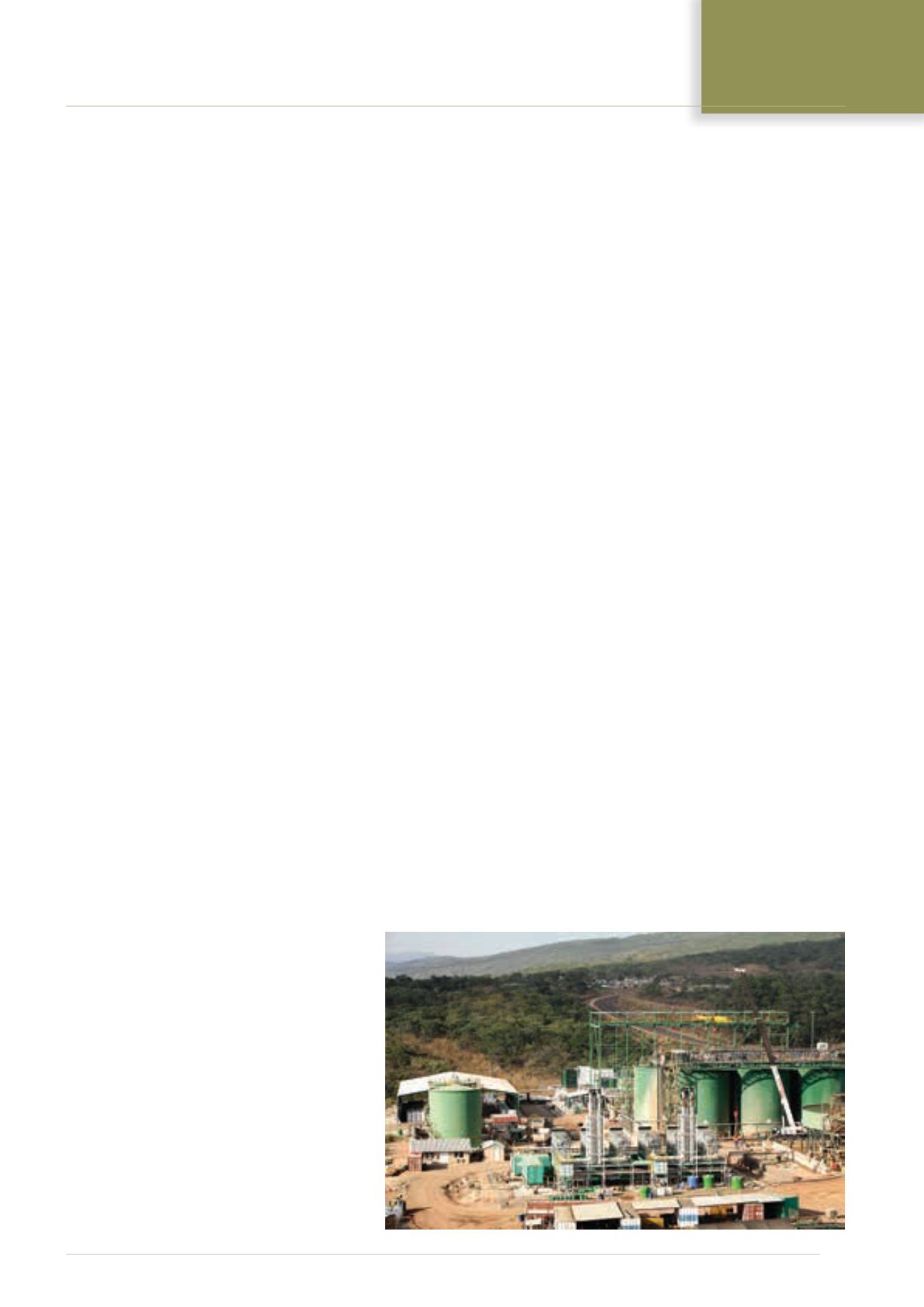
February 2014
MODERN MINING
45
URANIUM
Paladin Group. This is in the best interest of all
PAL stakeholders, including the Government
of Malawi.”
PAL has maintained operations at KM since
the Fukushima earthquake and tsunami of
March 2011 at considerable financial cost to
Paladin. During this period, the spot uranium
price has more than halved from its pre-Fuku-
shima level of US$72,63/lb to a current price
of US$35,50/lb. While PAL has achieved suc-
cessive cost reductions quarter by quarter, these
efforts – says Paladin – have not been sufficient
to achieve cash breakeven at KM. For example,
during financial year 2012-13, PAL reduced
KM’s year-on-year direct cost of production
(C1) by 24 % to US$39,20/lb, while maintaining
uranium production at optimal, near-nameplate
levels. In the same period, the uranium spot
price declined by 32 % − from US$50,75/lb in
June 2012 to US$34,50/lb in July 2013.
While PAL has successfully installed and
commissioned one of two major cost-reduc-
tion initiatives at KM for FY 2013-14 (the
Nano-filtration acid recovery plant), the sec-
ond measure aimed at significantly reducing
KM’s cost of power by connecting the opera-
tion to Malawi’s national power distribution
grid has not been achieved to date. During the
18-month negotiating period, uranium prices
have continued to fall, making grid power,
even if available at this time, ineffectual in
achieving profitability at KM.
Since Fukushima, the negative impact on KM
of the very low uranium spot price was par-
tially offset initially by several higher-priced
term sales contracts put in place before March
2011; however, KM delivered its last prod-
uct under these contracts in September 2013.
Subsequent uranium produced from KM is now
fully exposed to the depressed uranium spot
market. The very low continuing uranium spot
price, together with the operation’s cash cost
of production, which remains above the spot
price, makes continued operation at KM unsus-
tainable in both current market conditions and
in conditions projected in the medium term.
While mining operations at KM are being
suspended, says Paladin, processing of ore will
continue during a transitional rundown phase
until reagents and consumables on site have
been depleted and the production circuit has
been emptied and cleaned. At this time, the
plant will be sterilised, shut down and placed
on care and maintenance. This rundown/ster-
ilisation phase is expected to be completed by
April/May of this year.
PAL is committed to maintaining the mine
and infrastructure at KM in good working order
The Kayelekera processing
plant with the mine camp in
the background.
to facilitate a rapid resumption of production
when market conditions dictate that it is pos-
sible to profitably do so. For this reason, PAL
will retain some 194 Malawi national employ-
ees and 27 expatriate staff to maintain the site,
including staff to strengthen physical security
measures at the operation.
According to Paladin, the decision will result
in a significant level of redundancy at KM
and the process has commenced to retrench
employees not required during the period of
care and maintenance. In appreciation of their
endeavours to drive down costs and improve
efficiency, retrenched national employees will
receive generous redundancy packages that
exceed Malawi’s minimum legal requirements.
In addition, national employees will be offered
financial planning advice and training in busi-
ness skills.
Supporting KM has been a substantial
drain on Paladin’s cash resources during the
past three years. Based on a uranium price of
U$35/lb, Paladin would have had to inject a
further US$20-25 million in cash for each of
the next two calendar years to maintain the
operation.
Placing KM on care and maintenance will
improve Paladin’s forecast cash flow position
by US$7-10 million in calendar year 2014 and
US$20-25 million in calendar year 2015.
Paladin says KM is one of numerous ura-
nium mines currently operating at or below
breakeven. PAL’s decision to place KM on care
and maintenance is the latest in a sequence of
closures, production suspensions and deferrals
of major planned greenfield and brownfield
expansions in the uranium sector, including
Paladin’s decision in 2012 to suspend evalua-
tion of a major Stage 4 expansion of the Langer
Heinrich Mine in Namibia.
Photos courtesy of Paladin Energy
“Even when uranium
prices improve, it is
inevitable that the
lead-time to return
mothballed operations
to production and
re-evaluate the
development timeframe
for deferred brownfield
and greenfield projects
will exacerbate the
uranium supply-demand
imbalance that will
become increasingly
evident in the course of
this decade.”
John Borshoff, MD/CEO,
Paladin Energy


